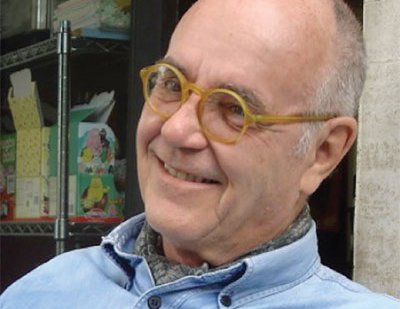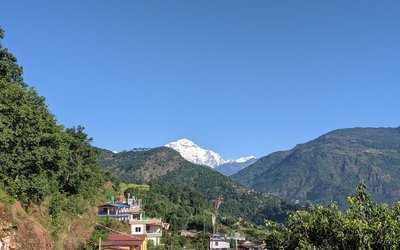
One individual cannot make a nation. Different people contribute their mite in different times to build the nation. Working side by side with native Nepalis, many expatriates have spent their whole life to restore and preserve Nepal's culture, language, heritage, society and history and contributed to strengthen Nepal's foundation. They did so without expecting a specific return for their contribution. The reason why they were motivated was because they loved Nepal.
Among these foreign friends is Götz Hagmüller, a renowned Austrian archeologist. With interest and a life-long experience in the field of heritage preservation, Prof. Götz Hagmüller knew the in and outs of Nepal's heritage and architectural sites of Nepal. More than any Nepali, he had the understanding of what would work and what would not in the conservation and preservation of the architectural heritage of Nepal.
Despite his deep love, dedication and commitment, Nepal has done very little in recognition of the contribution by this architect. Living in Bhaktapur's Kuthu Math, an 18th century pilgrim hostel, Götz Hagmüller, who has been living in Nepal for almost 35 years as a foreigner, is yet to get any special treatment from the Nepal government.
Prof. Hagmüller shares, “It is heart-wrenching to realize that it is impossible for modern Nepal to recreate and replicate these ancient buildings overflowing with rich history.”
Preservation, hence, should be the motto of every Nepali, limited to not only the historical monuments and palaces, but the rich tradition, religious festivals and musical diversity. He believes that Nepal with its cultural abundance is one of a kind in the world and not understanding the importance of it shall be a blunder on our part.
His job as a manager of the Bhaktapur Development Project brought him to this old city in 1979. He was later to restore the Patan Museum, and his more recent project just completed, is the remarkable Garden of Dreams.
The man, who fell in love with this country since 1968 when he had come to Nepal as a UN (FAO) officer, needs facilities that recognize him as different from other visitors. He should be given a status at par with a Nepali for his contributions. Although Nepal's Immigration Act has provisions to give special status for those who make great contributions, the Department of Immigration is yet to implement this for him.
Forget about reciprocating; Nepal is yet to respect and recognize a person like Götz Hagmüller for his contribution. Young Hagmüller was fascinated when he saw the historic urban settlements and spaces filled with ancient palaces, mountains, courtyards and temples. In his words, Nepal has three of the most beautiful cities in the world.
Götz's idea to renovate the Garden of Dream occurred after reading an article by Dr. Safalya Amatya in The Rising Nepal. Amatya, who was director general of the Department of Archiology, is one of a few Nepali people, who inspire expatriate communities to work for preservation of Nepal's heritage.
In his love with Nepal's architecture, Götz met Ludmilla Hungerhuber (see ECS August 2006.) in 1979, who had come to visit a friend. It so happened that they were flying to Germany on the same plane. During their conversation, Götz mentioned the fact that he needed an assistant to which she replied, “Why don’t you hire me.” She got the job and joined the project the following year. Fifteen years later, they walked into the Bhaktapur Nagar Palika office and came out as man and wife.
Although he spent 35 years in Nepal in preservation of heritage, his professional work was in its peak during the period 1986 to 1997, as chief architect and project coordinator of the Patan Durbar Conservation and Museum Project.
The restoration of the 17th century Patan Palace and its conversion to adaptive modern use led to the establishment of the famous Patan Museum – a self-sustaining cultural institution and a revenue generating prime tourist attraction of international standards.
For his contribution in preservation of natural heritage, Götz Hagmüller was awarded the Gorkha Dakshin Bahu by the late King Birendra in 2001 and the honorary title of “Professor” by the Austrian President.
As the world became globalised and many native of Nepali have been living in different parts of the world and over 200,000 people of Nepali origin have already acquired citizenship certificates in foreign countries or living with permanent residency, particularly in the United Kingdom, Japan, Canada, Australia, the United States and other European countries.
Whatever the gesture the government of Nepal has shown, the mission of Götz Hagmüller is to preserve Nepal's architecture and heritage as he loves Nepal more than his own country. The time has come for Nepal to recognize and respect Götz Hagmüller, a keeper of Nepal's foundational heritages.

Keshab Poudel
Poudel is the editor of New Spotlight Magazine.
- ECONOMY: Growth At 3.3
- Apr 16, 2024
- DPM’s SHRESTHA’S CHINA VISIT High Profile, Low Key
- Apr 14, 2024
- Maha Kumbha In Barahkshetra: A Sacred Festival In Sacred Koshi (Kaushiki) River
- Apr 09, 2024
- LOSS AND DAMAGE: Upper Tamakoshi A Case
- Apr 02, 2024
- Helvetas-Nepal’s InElam Promoting Herbal Oil In Sarlahi
- Mar 31, 2024















